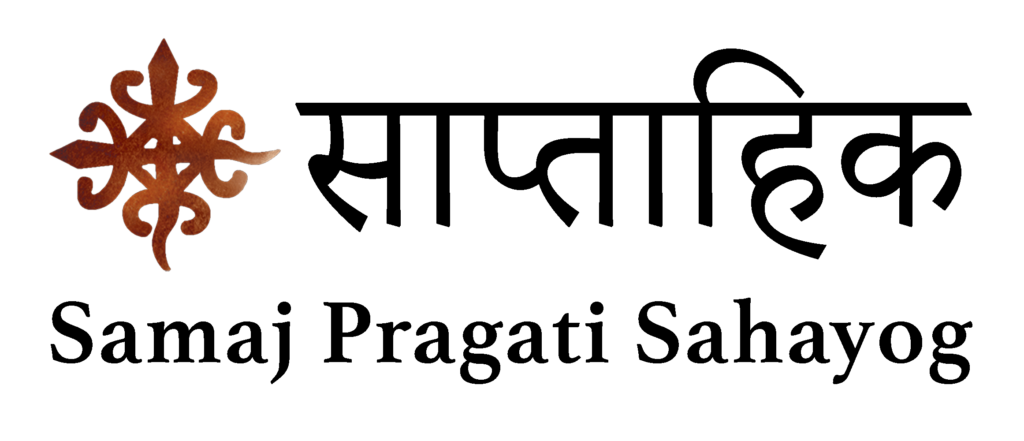With a view to encouraging ayurvedic medicines and better nutrition for domestic animals, Bagli Pragati Samiti’s Livestock Programme established an ayurvedic medicine centre in Bawdikheda village in April 2024. For most rural households in the cluster of villagesthat make up the Bagli Block Panchayat), goat-rearing is a primary or supplementary source of income.While it is common forowners to graze their animals in the forests, in the dry heat of summer a forest becomes scanty in fodder and turnsunsuitable as pasture. Many people try to bridgethis seasonal gap with the staple grain available in their homes, whether wheat or corn. Not only does a single type of grain fail to provide the required nutrition, hungry goats tend to eat these grains in large quantities, which can cause diarrhoea.
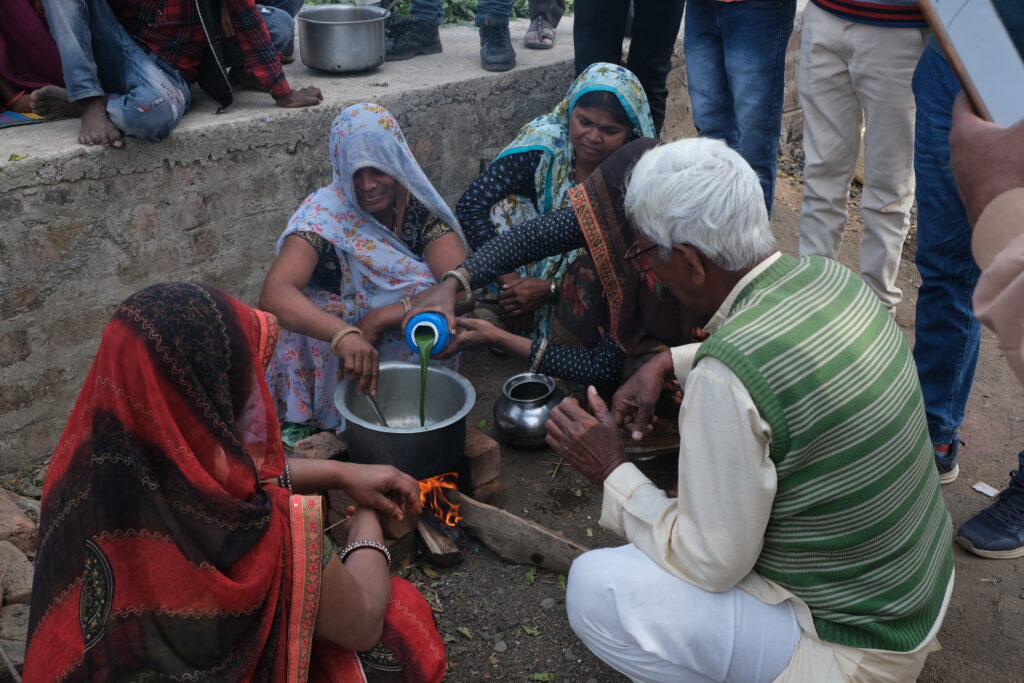
At the ayurvedic centre grain mix ,[1]liver tonic[2]neem oil[5] and mineral bricks[6] Manju Harmar and Babita Harmar have taken on the task of making The grain mix is easy for goats to digest, besides being tasty and filled with nutrients. Some weeks earlier, Dr Bhishma Singh of Rajasthan provided training sessions in making these products at home. With three decades’ experience in the goat-rearing sector, he conducted a two-day training for women from the Self-Help Groups and the livestock collective at Rampura village in the Bagli location (area of work). That was where Manju Harmar and Babita Harmar learned how to make ayurvedic medicines. They obtain some of the raw ingredients from the main Bagli market, while other materials are available in the village. Manju speaks of how the Livestock Programme team used to guide them to the right places and assist them in identifying and selecting the ingredients, but now the two women do the shopping on their own. The team still oversees the actual manufacture, to ensure precision of measurements and for quality control.
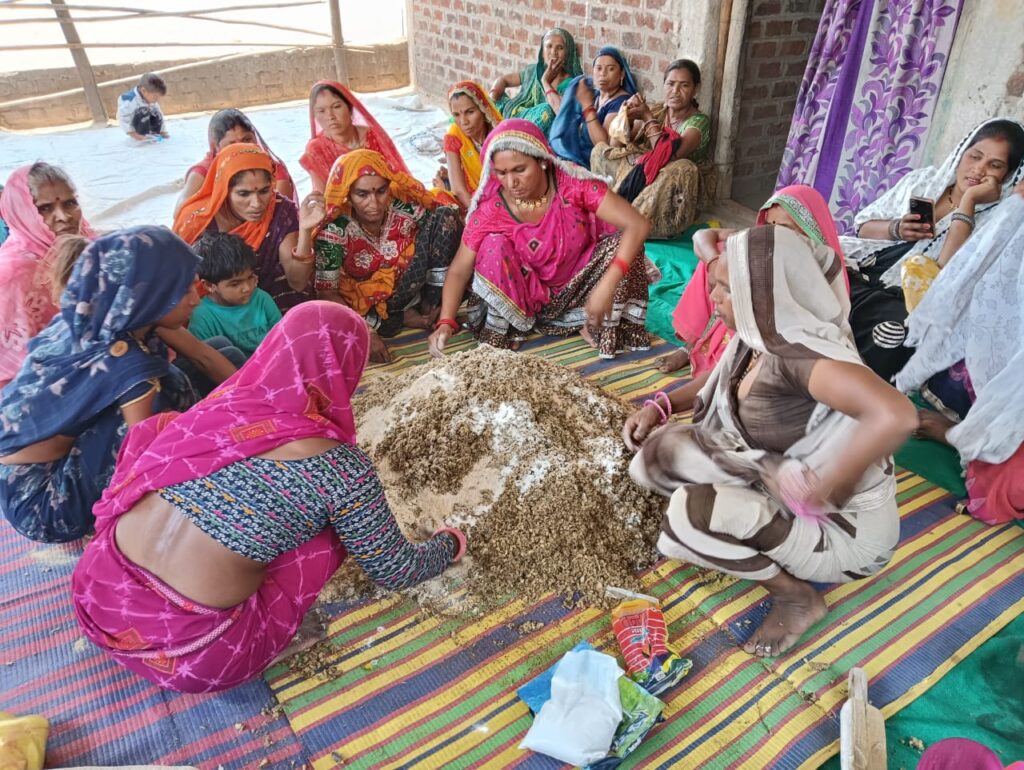
In just the past month, they sold 4 quintals of grain mix, 4 litres of neem oil, 10 litres of liver tonic, and 105 mineral bricks. Most people involved in goat-rearing have been using these products, and the benefits are evident. The grain mix helps the goat gain weight, and is particularly helpful in keeping pregnant goats and their unborn kids healthy. The neem oil is proving beneficial when it comes to skin disease and wounds. And the tonic soothes uneasiness and induces hunger in large animals that have lost their appetite. Not only are these medicines less expensive than their commercial counterparts, says Babita, they have no harmful side effects.
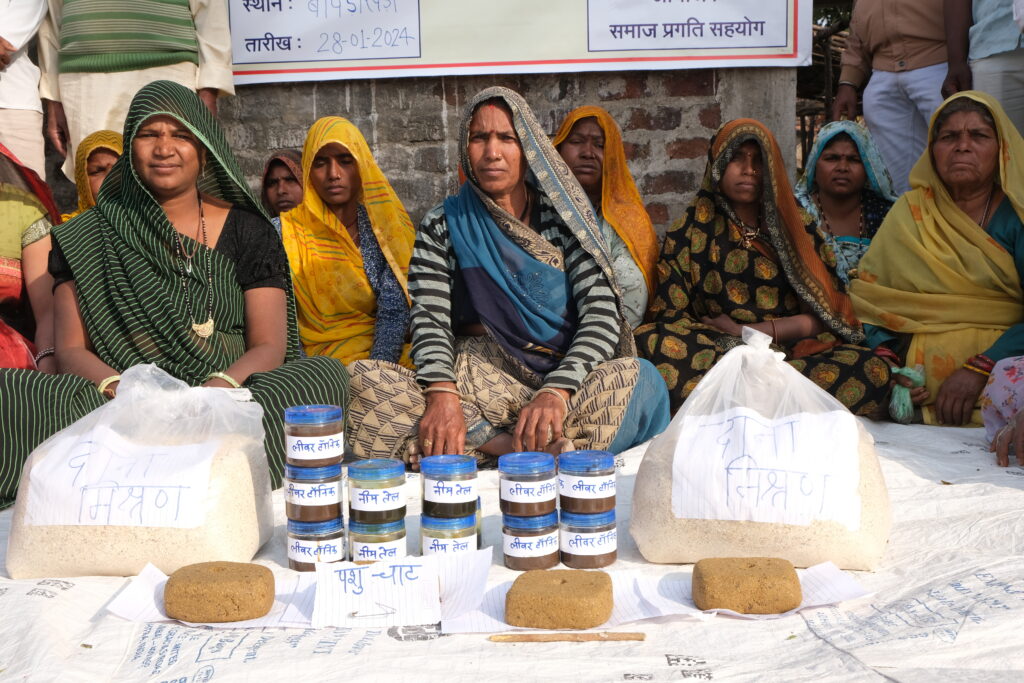
Dr Ashish Awasthi of the Livestock Programme recalls how, in Bagli Block, a number of birthing difficulties prevailed among the goat population. For instance, the unborn kid being stuck, leading to its death and sometimes its mother’s death as well. Good nutrition and health care for goats becomes, then, all the more important. The Livestock team is in constant conversation with people about how best to use the locally made products.
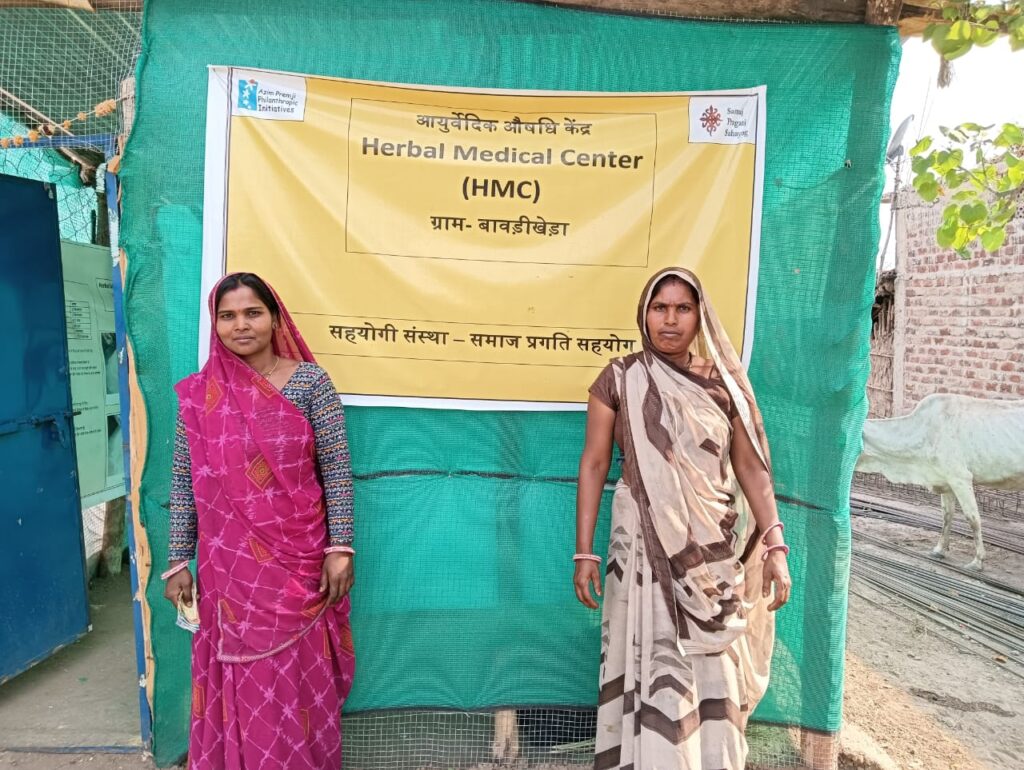
Manju Harmar and Babita Harmar are pleased to have the ayurvedic centre. It provides them with an additional source of income – in one month, they have made a profit of Rs 4,000. The ayurvedic medicine centre was started with financial support from Samaj Pragati Sahayog and the Azim Premji Foundation. Doubtless, this initiative will help in animal disease prevention while enabling better earnings for livestock owners.
[1] a nutrient-rich feed comprising a mix of grains
[2] a liquid to improve appetite and aid digestion
[5] a remedy for skin problems, and to prevent infection
[6] a brick for animals to lick, which provides them with nutrients missing in their diets
Writing: Pradeep Lekhwar
Source: Dr Ashish Awasthi
Photography: Aajad Singh Khichi and Dr Ashish Awasthi
